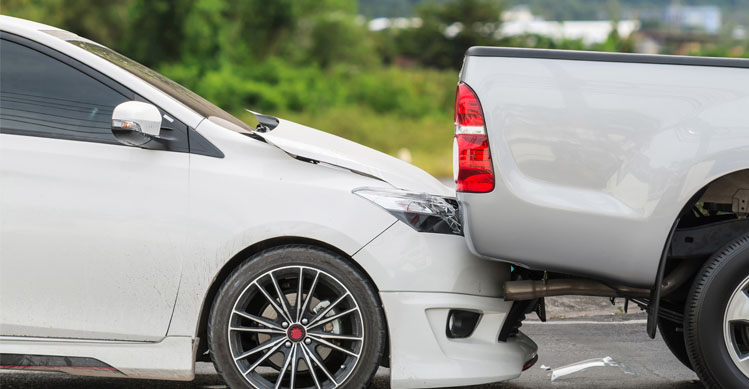Whether your budget is a couple of thousand or substantially more, buying a new or used car is both exciting and stressful. There are lots of things to think about, which means there are multiple opportunities to trip up and get something wrong.
Take the hassle out of car buying and protect your financial investment by following these simple steps.
1. Identify a vehicle type to suit your lifestyle
We are spoilt for choice when it comes to vehicles. There seems to be a shape, size and style for everyone. To narrow down the multitude of options, think about how you use your vehicle and what features are most important to you. Do you need extra space for children or pets? Do you often need a tow bar to transport large loads or work equipment? Is fuel economy a major factor?
Think about the body style of the car, transmission type (automatic or manual), safety and comfort features, and engine size to help you work out the most practical option for your lifestyle.
Making a need vs want list will help you prioritise what’s important, and if you’re lucky you’ll get the ideal car in the colour you want too.
2. Stick to your budget and read the small print
You may already have a car that you’re planning on selling or trading in, so do some research on what your car’s current market value is. If you have savings, work out how much you’re willing to spend from there. These values will help you when you’re working out your budget.
Quite often people turn to banks or finance companies to purchase the new car. Try to have this organised (or pre-approved) prior to purchasing, so you’re not rushed into a decision you might regret. Make sure you shop around for the best finance deal. Sometimes a lender might offer you more money than required; try not to be tempted to spend more than you really need, or can afford.
Before agreeing to any offer of finance, do your due diligence. Take your time to read the documents carefully. Some interest rates are very high and some companies charge varying types of fees. If you’re having trouble understanding anything, don’t be afraid to ask questions or get a family member or friend to look through it. Never sign anything that you don’t really understand.
3. Get stuck into some research
After going through step one and two, you can now identify what kind of vehicle you’re in the market for and how much you can afford to spend.
From here you can do more refined research on these models. Sometimes searching for ‘known faults’ of a particular year, make and model can bring up minor or major issues to look out for, but make sure you gather information from reputable websites. If you happen to know someone who owns the model of car you’re interested in, it might pay to talk to them and get their feedback.
Important note: Registered Motor Vehicle Traders are bound to operate under strict regulations and guidelines. If you do decide to buy privately, you’re leaving yourself open to the risk of not having anything to fall back on if something goes wrong. So be careful and really pay attention when it comes to step 4.
4. Select some contenders and arrange test drives
Once you have a shortlist of potentials, it’s time to arrange viewing and a test drive. Here are some points to consider while you’re driving a potential purchase:
- When you sit in the driver’s seat, check that you can reach all of the controls and read the gauges easily. Make sure you can adjust the seat and steering wheel to a comfortable position and that you have enough leg room and head rest support. If someone else will be driving the car regularly, ask them to do the same.
- Take your time when looking around the interior, exterior and tyres for any signs of past or present issues. While you’re doing this, remember to check the registration (rego) and Warrant of Fitness (WOF) are both current - these will be clearly visible on the windscreen. This ensures the car is roadworthy and legal to drive.
- Ask the seller if the car has sufficient insurance before you take it out for a test drive. If it doesn’t, and you’re involved in an accident, you could be held responsible for damage.
- Before you start driving, check that the mirrors are adjusted to suit your position in the seat. Take note of the visibility from the vehicle from all sides.
- While driving, think about how it feels to drive. Is it responsive and comfortable? Does it meet your requirements? If anything worries you, make a note for later.
- Ask to see relevant paperwork, such as service and repair receipts, Certificate of Registration and any previous inspection reports.
- Never feel obligated to sign anything. Let the seller know that you’re looking at a few options and will be making a decision once you’ve finished all of your test drives.
At this point you’re focusing on whether the car meets your requirements; you don’t need to be a mechanical expert. Once you have found something you’re very interested in, arrange for a professional vehicle inspection company (such as VTNZ) to do the pre-purchase inspection.
5. Order a Vehicle Information Report (history check) online
Every car has a history, so you can protect yourself from unknown risks with a Vehicle Information Report (i.e. VIR, history check). The VIR is New Zealand's most comprehensive report on a vehicle's current legal status and registered ownership history.
The VIR gathers vehicle information from numerous government and private databases, then 42 checks are automatically performed on the data to find any issues of concern including:
- If there is money owing
- If it’s been reported stolen by police
- Inconsistent odometer readings or wind-backs
- Expired warrant of fitness or certificate of fitness
- Outstanding road user charges (RUC diesel tax)
- Expired licenses and de-registrations (possible accident damage)
- NZ customs alerts on accident or flood damaged imports
- And more
This comprehensive report can identify any ‘red flags’ that you need to be aware of before you finalise the purchase of the vehicle.
You can get a VIR online 24 hours a day, or by calling 0800 843 847 at a small cost. They just need the car's registration plate number. When you do get the VIR, make sure you keep it in a safe place with the rest of the vehicle’s paperwork as it’s an important legal document.
6. Arrange a professional vehicle inspection
It’s a really good idea to get a professional to assess the car to give you peace of mind and find any potential problems that could cost you in the future. Now is the time to bring up any concerns you had when you test drove the vehicle - the inspector can look into these while they do the inspection.
Opt for an independent and reputable company like VTNZ. They are trained to pick up on issues with the engine, battery, alternator, starter motor, radiator, water pump, tyres, steering and suspension. They also look for signs of rust and take it for a test drive to check the performance, brakes and handling.
Not every car is perfect. Some minor faults could be found that aren’t hard or expensive to fix. So don’t let that put you off if the vehicle is in good shape otherwise. On the other hand, if something significant is uncovered, you should consider another option or adjust your purchase offer to cover the repair costs.
7. Get it down on paper
When dealing with big purchases, it’s important to have the details of the purchase terms outlined in a formal agreement. It’s in the best interests of the seller and buyer to have a Purchase Agreement detailing full names of parties, the purchase price, payment method, vehicle details and the date of purchase. Both parties should sign and have a copy of the agreement to keep. The agreement should also state that no other party has claim on the car or its accessories (you can validate this with the VIR). If the car has personalised plates, you’ll need to specify in the agreement if these are included in the sale.
8. Organise the best kind of insurance
The world of driving is an unpredictable one, so make sure you arrange insurance for the vehicle before driving off with it. Driving an uninsured vehicle is a risk not worth taking. You can get a quote and buy online, and it only takes about 10 minutes.
Some cars come fitted with an alarm or engine immobiliser. If yours doesn’t, it would be a wise move to have an anti-theft device installed to deter any shady characters from stealing your new purchase.
If you’re new to driving (or New Zealand roads), it’s worth signing up for a defensive driving course. This helps you understand how your vehicle reacts in unpredictable situations and be a safer driver on the road.
9. Put the vehicle in your name
Once you’ve completed the purchase transaction, you need to register the change of ownership with the New Zealand Transport Agency. As the purchaser you’ll need to complete a MR13B form (the seller completes a MR13A). You can do this very quickly and easily on their website; alternatively you can do this at an NZTA agent, such as a NZ Post Shop.
Proof of identification, such as your New Zealand driver’s licence, will be required. Other approved ID can be used, but only at an NZTA agent (not on the website).
Important: It’s a legal requirement to complete and submit these forms within seven days of the purchase, so it’s a good idea to do it as soon as you’re able. This ensures both parties aren’t liable for each other’s fees, charges or traffic fines. It should take up to 10 working days for your new Certificate of Registration to arrive in the post. When it does arrive, put it in a safe place with the other relevant documentation.
You might also like...
-
 February 2022Driving Blog | State Insurance
February 2022Driving Blog | State InsuranceTop 10 Suburbs for Collisions
-
 August 2020Driving Blog | State Insurance
August 2020Driving Blog | State InsuranceProtecting Your Ride
-
 August 2020Driving Blog | State Insurance
August 2020Driving Blog | State InsuranceGetting Your Car Ready for a Summer Road Trip
